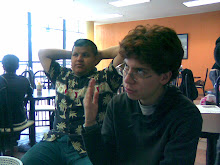I found reading, whether Mr. White's Response theory works or he Joycean Epiphany instead, a very difficult thing to define. This is because the reader can or cannot enjoy a reading and this may affect his/her response, which eventually will not leave place for the epiphany.
I think, above all the linguistic developments of a poem for example, that a good reading is the one that makes you think or re-read. The mental process of the epiphany may work in a second (and it is supposed to be the reading) but the second part of the epiphany is working it. Thus the thinking takes place. One of the best examples in contemporary novel is Atonement. The epiphany arrives in the third part, specifically in the letter sent by the editors rejecting the novel which at the end will become Atonement. In the final part, even with the elegiac journal entry of Briony in her late seventies one has to think in the concept of the "meta-meta novel". This thinking and re-reading is the final process of the epiphany.
In poetry is much more complicated and a nice example would be "Follower" by Seamus Heaney. There is a singular pattern in this poem, the cyclical repetition of the boy-man-old man. The child-perspective of the sail-like-shoulders encounters a strong opposition with the final stanza. Now his father (poetic's voice) is "stumbling/Behind me". Certainly the perspective of the shadow, the remembrance and the duty to fulfill the work of the crops is reached with a second or third reading.
The opposite is supposed to happen with the short story. Quoting Cortázar's famous sentence a Raymond Carver story would be the choice for the perfect epiphany. And thus leading this short discussion to Hemigway's perfect short story: "For Sale: Baby shoes, never worn".
Tuesday, July 15, 2008
Subscribe to:
Post Comments (Atom)




No comments:
Post a Comment